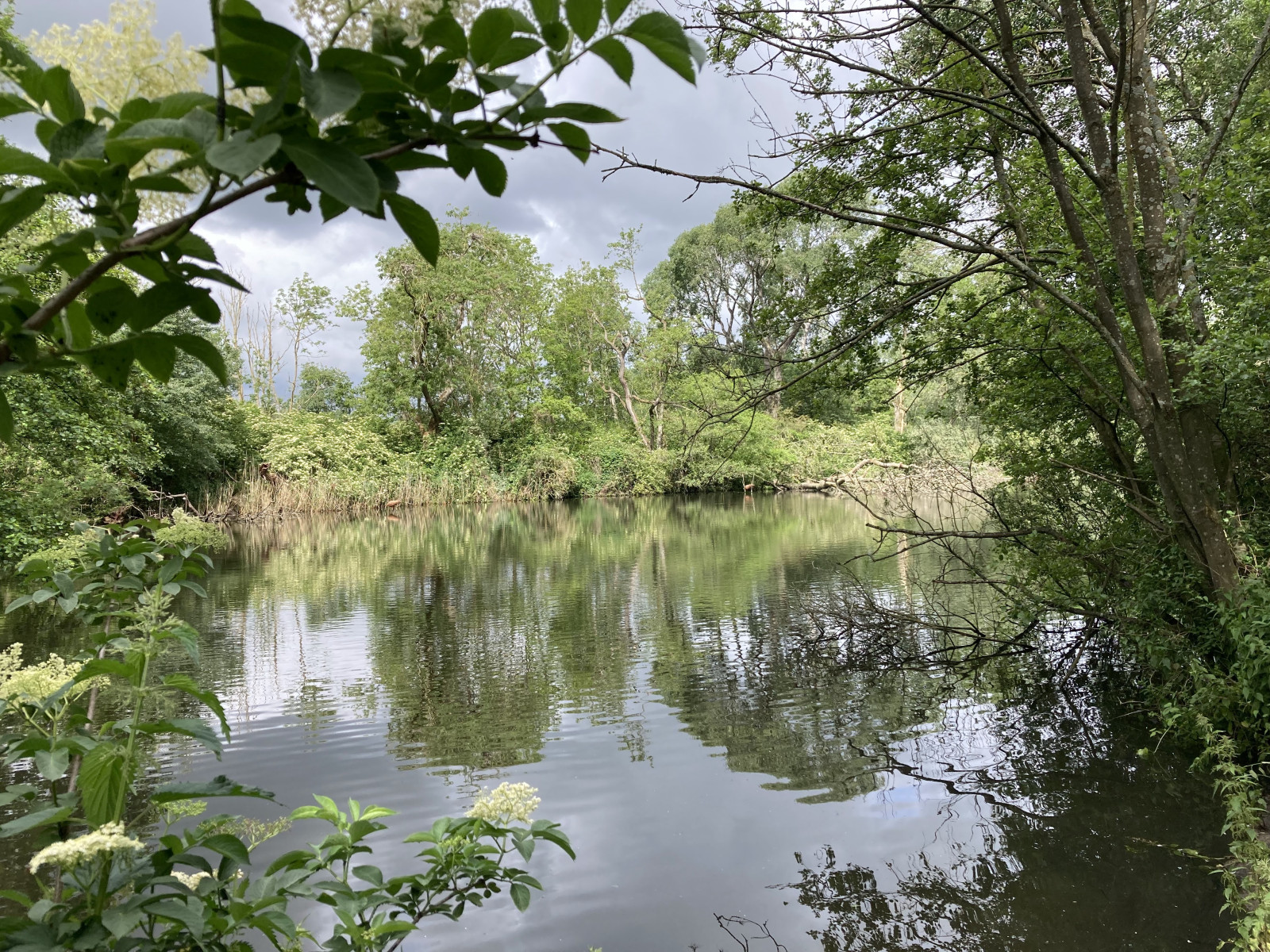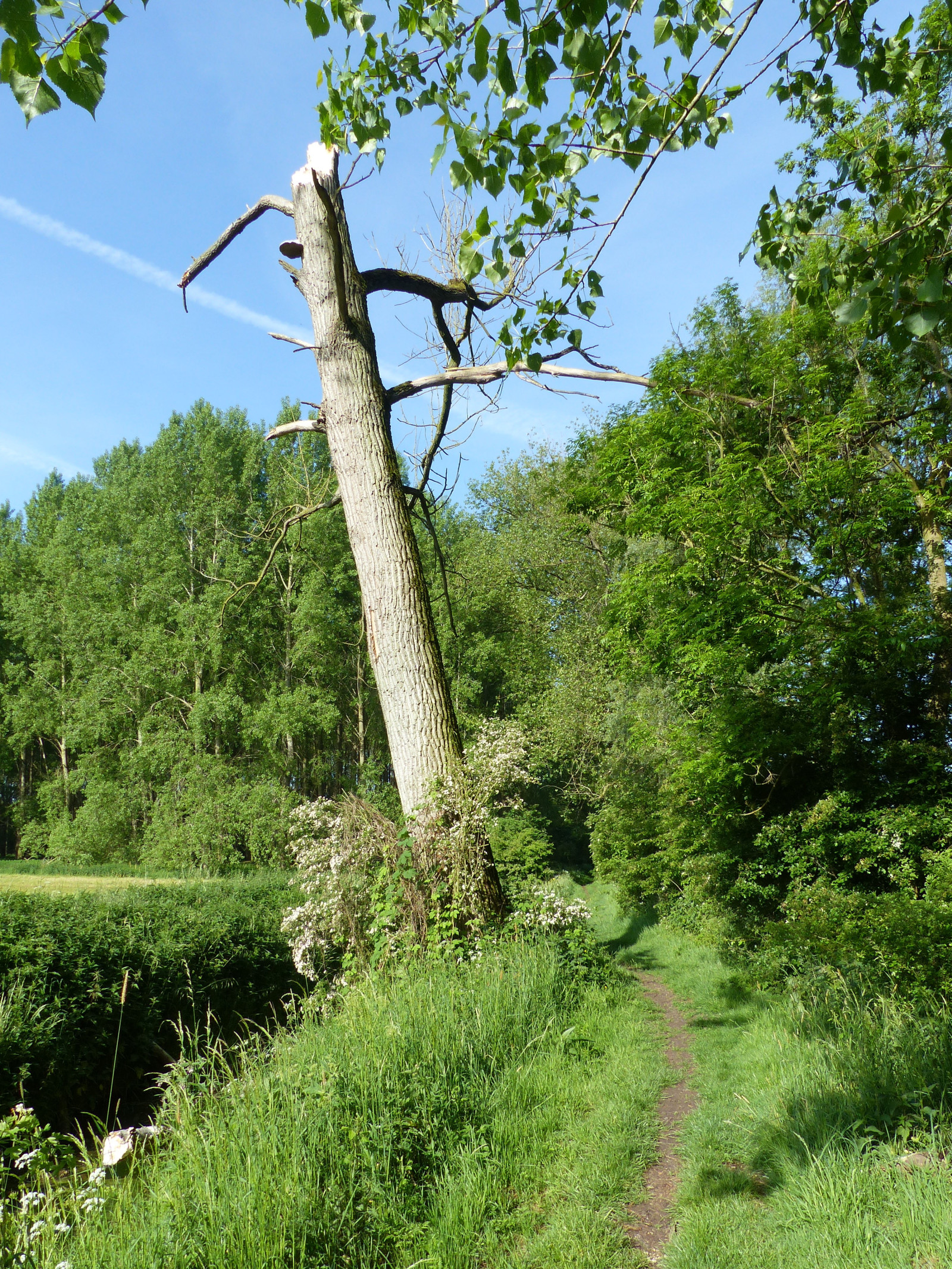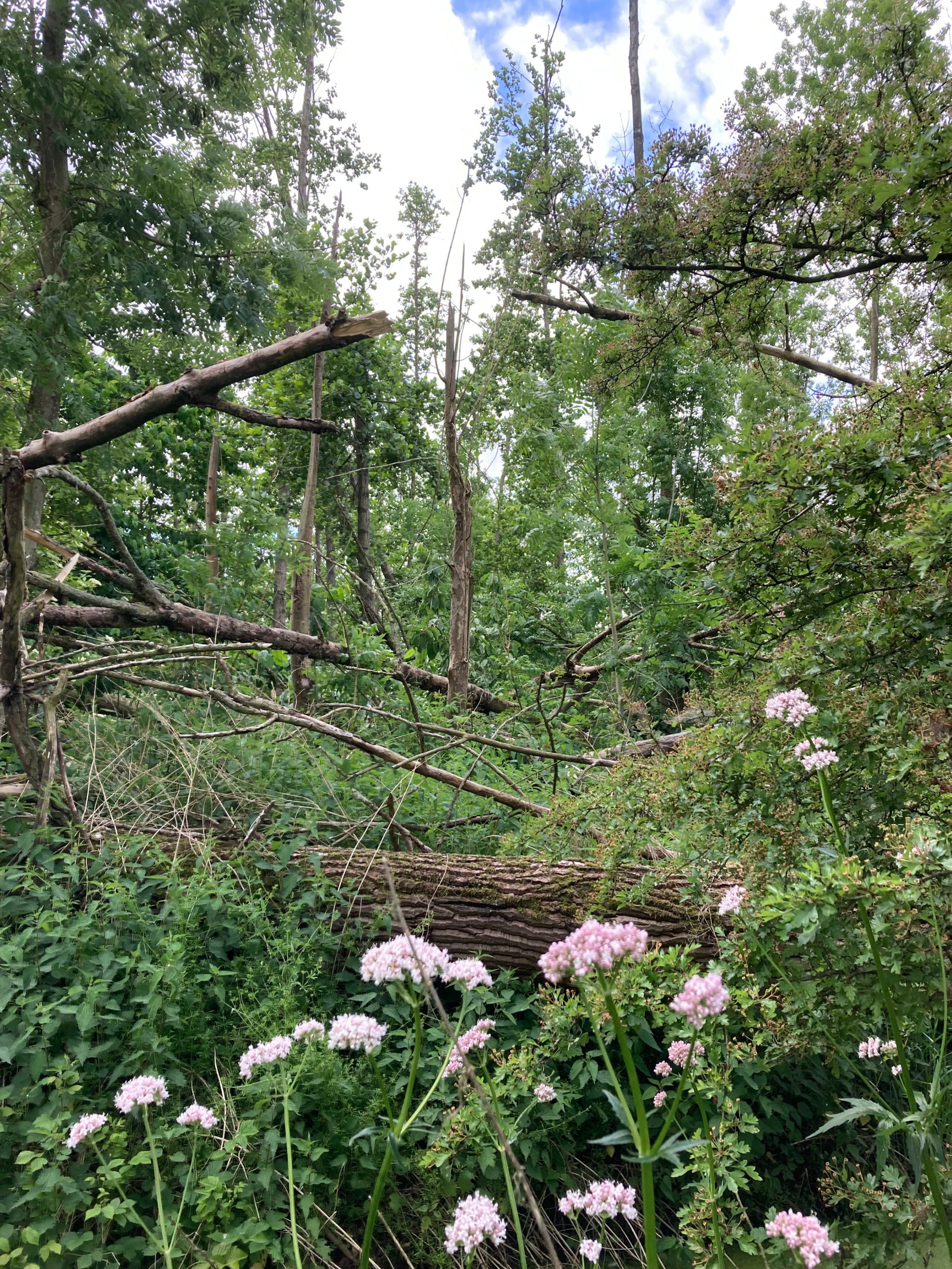Description
The Heerlijkheid Mariënwaerdt is a vast estate near the town of Beesd in the Betuwe region (province of Gelderland) at the boarder of the river Linge. The semi-open cultural landscape partly includes the Beesdsche Hoge and Lage Veld (High Field and Low Field). The area contains parts of the Gelderland Nature Network.
The estate is approx. 900 ha. large and consists of pasture, arable land, orchards, coppice, forests, tree lanes and typical former duck trapping ponds. The largest proportion of woodland consists of poplar forest, and there is a mixed deciduous forest around the estate house. The arable farming and cattle breeding on the estate is done organically. In the past the low parts of the area with a river clay soil used to be very wet, especially in winter.
The varied area has a wide variety of breeding birds, especially species of woodland and semi-open landscape, such as Повзик звичайний, Підкоришник короткопалий, Мухоловка сіра, Зелений дятел and Дятел звичайний. Less common are Костогриз, Горихвістка звичайна and Вивільга звичайна, but there is a good chance of finding them. There are some pairs of Дятел малий breeding. The Дятел середній and Вівчарик жовтобровий have also been observed as forest birds. On the estate you can find 4 breeding owl species. Along the Linge and elsewhere along the canals in the area, an encounter is possible with Чапля руда and various other water birds.
In coppice, felling plains, shrubbery and reeds scattered throughout the area one encounters during the breeding season songbirds such as Очеретянка чагарникова, Кобилочка-цвіркун, Берестянка звичайна, Кропив’янка сіра, Щеврик лісовий, Очеретянка середземноморська, Трав'янка чорноголова and Зозуля звичайна. Here and there the Гаїчка-пухляк is still there. Interesting for all these bird species are, among other places, the drained former fish ponds of the OVB with reed beds, rough vegetation and willow shrubs.
The remote northern part of the area along the Zeedijk, the Dwarssteeg and the Driftsteeg is relatively quiet. It’s among others a good place to find birds of prey. Specimens of Осоїд євразійський are regularly seen here in summer. Яструб великий, Яструб малий, Канюк звичайний and Підсоколик великий breed in the area, although much of the forest has recently been cleared. Лунь очеретяний and Лунь польовий and Шуліка рудий and Шуліка чорний are seen passing the area and sometimes rest here. One also could encounter Крук звичайний . In winter there is a chance to see for example Слуква лісова or to hear a Пастушок.
Rarities such as Орел-карлик малий, Сип білоголовий, Кібчик червононогий, Лунь степовий, Лелека чорний, Сорокопуд терновий and Берестянка багатоголоса were exceptional observations, but they illustrate that one can be surprised here.
_________________________
Nederlands: De Heerlijkheid Mariënwaerdt is een uitgestrekt landgoed bij de Gelderse plaats Beesd in de Betuwe, grenzen aan het riviertje de Linge. Het half open landschap omvat deels ook het Beesdsche (Hoge en Lage) Veld. Het gebied is ca. 900 ha. groot en bestaat uit akkers, weiden, boomgaarden, grienden, bossen, eendenkooien en lanen. Het grootste aandeel bos bestaat uit populierenbos, en er is een gemengd loofbos rond het landgoedhuis. De akkerbouw en veeteelt op het landgoed gebeuren biologisch. Van oudsher was het lage deel met rivierkleibodems erg nat, vooral in de winter.
Het afwisselende gebied kent een grote variatie aan broedvogels, vooral soorten van bos en halfopen landschap, zoals Boomklever, Boomkruiper, Grauwe Vliegenvanger, Groene specht en, Grote bonte specht. Minder algemeen zijn Appelvink, Gekraagde roodstaart en Wielewaal maar er is een goede kans ze te vinden. Er broeden enkele paren Kleine bonte specht. Ook de Middelste bonte specht en Fluiter zijn waargenomen als bosvogel. Op het landgoed zijn 4 uilensoorten als broedvogel te vinden. Langs de Linge en elders langs de verschillende weteringen met natuurvriendelijke oevers in het gebied is een ontmoeting mogelijk met Purperreiger en diverse andere watervogels.
In grienden, kapvlakten, struwelen en rietruigten verspreid in het gebied komt men onder andere zangvogels als de Bosrietzanger, Grasmus, Sprinkhaanzanger, Spotvogel, Roodborsttapuit en Koekoek tegen. Hier en daar zit de Matkop nog. Interessant voor deze soorten zijn o.a. de drooggevallen voormalige visvijvers van de OVB met rietvelden, ruigte en wilgenopslag.
Het noordelijke deel van het gebied langs de Zeedijk, de Dwarssteeg en de Driftsteeg kent een grote rust. Een goede plek om roofvogels waar te nemen. Hier worden ’s zomers regelmatig meerdere exemplaren van de Wespendief gezien. De Havik, Sperwer, Buizerd en Boomvalk broeden in het gebied, hoewel veel bospercelen recent gekapt zijn. Bruine, en Blauwe kiekendief en Rode en Zwarte wouw trekken door en pleisteren er soms. Ook kan men er de Raaf tegenkomen. In de winter is er kans op een Houtsnip of een Waterral. Zeldzaamheden als Dwergarend, Vale gier, Roodpootvalk, Steppekiekendief, Zwarte ooievaar, Grauwe klauwier en Orpheusspotvogel zijn hier waargenomen, het gebied heeft dus verrassingen in petto.
Details
Access
The area as a whole is easily accessible by car and bicycle. You can park in a few places near the central estate forest, further on roadsides in the rest of the area. Very suitable for long walking and cycling trips. Parts can only be reached on foot. The Driftsteeg can be difficult to pass after rain. The former fish ponds of the OVB are not accessible, but can be seen from the road Oude Waag. Click on a P in the map for directions.
_________________________
Nederlands: Het gebied is in zijn geheel goed bereikbaar met auto en fiets. Parkeren kan op enkele plekken bij het centrale landgoedbos, verder in bermen in de rest van het gebied. Klik op een P in de kaart voor een routebeschrijving. Het gebied is heel geschikt voor lange wandel- en fietstochten. Delen zijn alleen te voet te bereiken. De Driftsteeg kan slecht begaanbaar zijn na regen. De voormalige visvijvers van OVB zijn niet toegankelijk, wel vanaf de Oude Waag te overzien.







